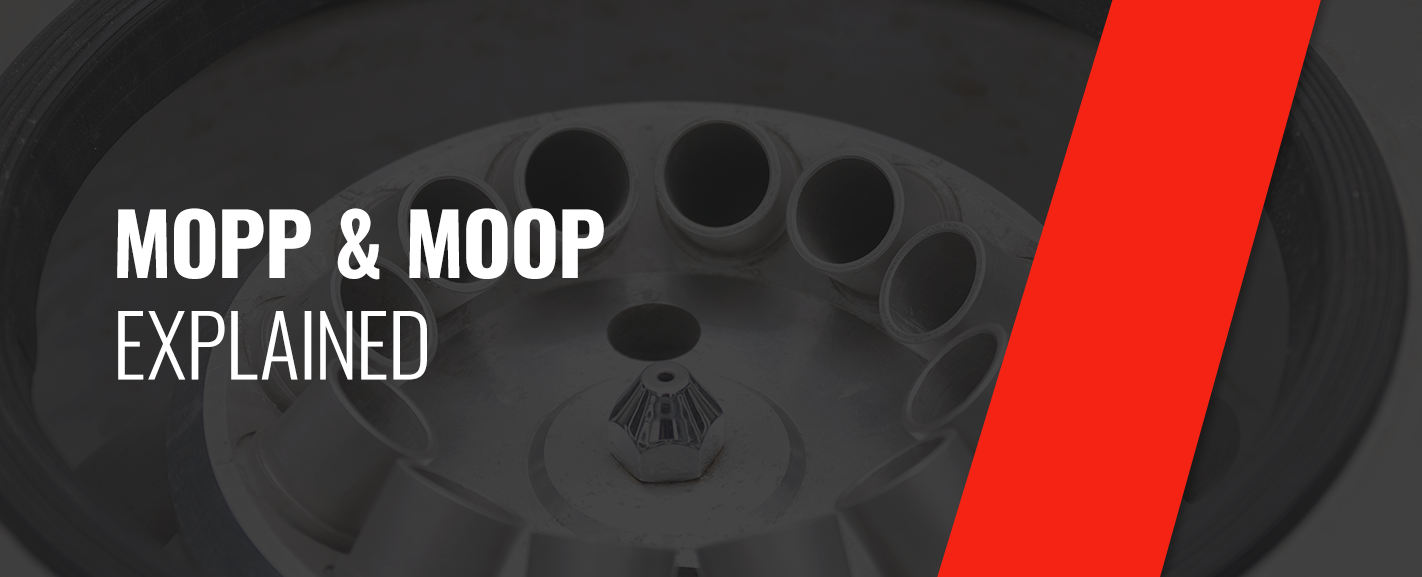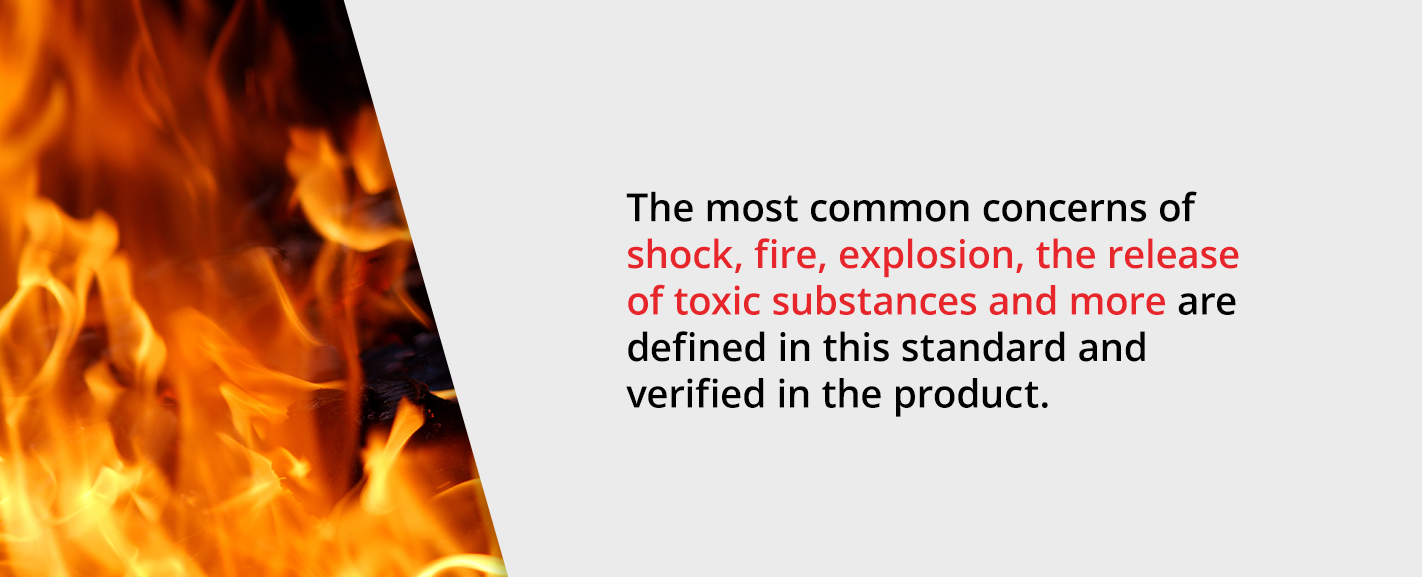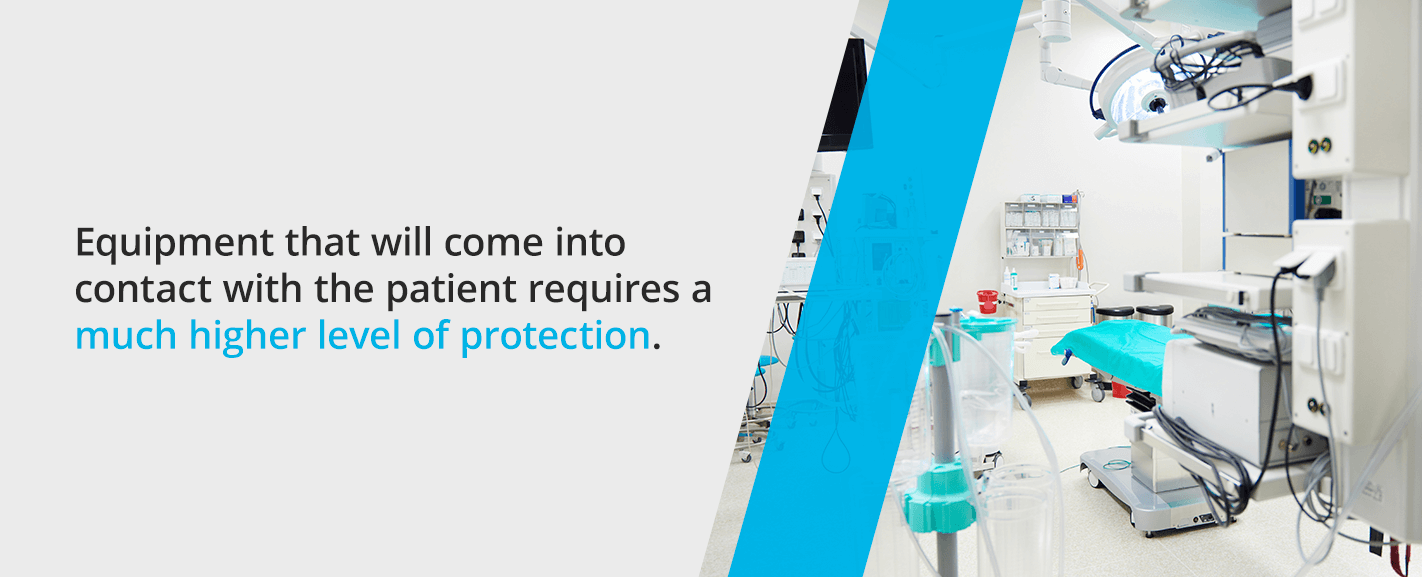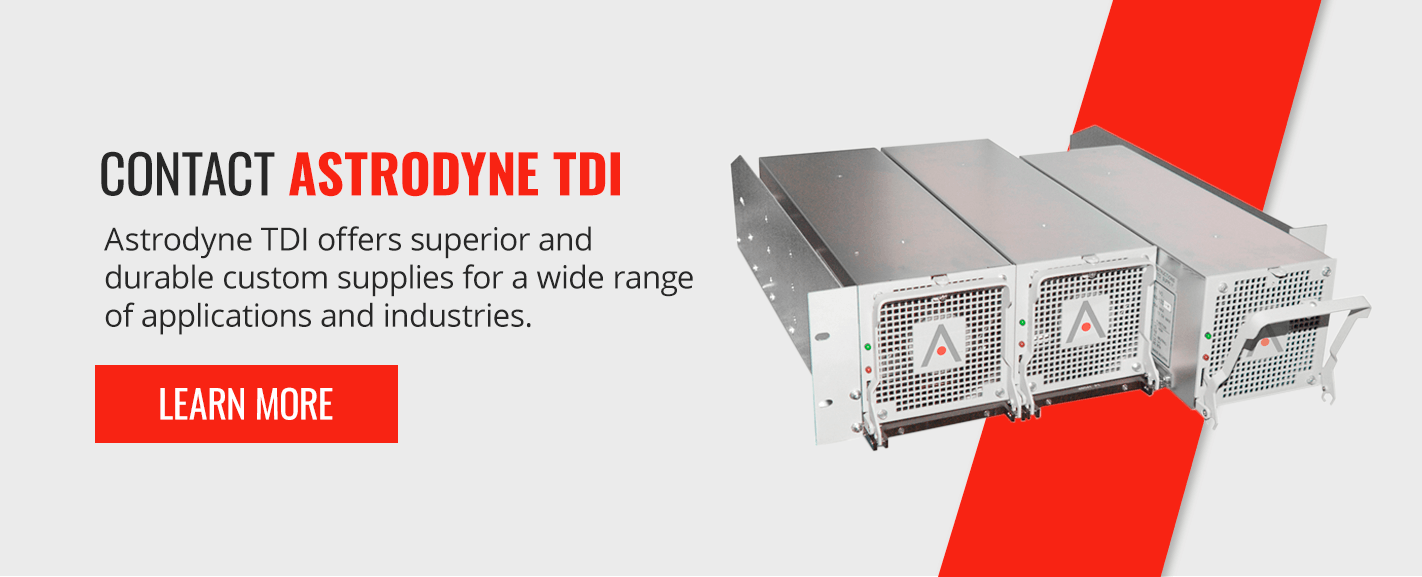RESOURCES
MOOP and MOPP

Electrical systems with the potential to be touched by a human being need to incorporate sufficient protection to ensure human safety. The means of protection should be incorporated into the design of the system, components, and materials that go into it building up the system. Means of protection can be in the form of separation from hazardous voltage and human access points like enclosure, handles, cables, keypads, etc. Even proximity is considered contact from a safety perspective.
There are two categories of humans that are considered for medical safety. The operator who can be a nurse, a doctor, or a technician is covered under means of operator protection, or MOOP. The patient whose safety is of paramount importance is covered under means of patient protection, or MOPP. Clearly, MOPP is more stringent than MOOP. Both are addressed briefly in this application note.
In a medical environment, there is often no clear-cut boundary where contact between an operator, such as a nurse, and the patient begins or ends. It is safe to assume that proximity of the human is considered as contact with the device.
For example, in a blood testing laboratory, operators will be using devices. These systems need to provide protection to the operator through means of operator protection (MOOP). But, if a blood transfusion is happening, a patient might be connected to monitoring equipment while an electrically operated blood circulation device may be used. Naturally, the patient is more vulnerable and unable to respond well, the system used here needs to have a higher level of protection. This would be an example of a system that needs means of patient protection (MOPP). In many cases, the actual level of protection built-in is doubled or made twice as stringent. In other words, a common safety requirement for such systems called 2-MOPP is mandatory.
The Human Safety Equation
Human beings need comforts. And comforts are provided by a host of gadgets that have become indispensable parts of our lives, like phones, cars, heating and cooling, elevators, airplanes, and entertainment systems. They are so pervasive in our lives that we often can't imagine ourselves removed from them. Needless to say, while these comforts are provided, the systems around us should not pose a safety risk from electrical shock, fire, or injury.
What happens when we are sick or impaired and need to be cared for by other humans or machines, like X-ray equipment and diagnostic systems? What happens if they aren't safe enough and pose a risk of shock, fire, or explosion? Thankfully, we don't have to think about those risks, because those systems are designed and built to high standards, defined by a collective system of definitions, verifications, and assurances
Safety First
Over decades of an organized study of materials, design, and manufacturing methods, a well-defined system of rules and practices has evolved in the form of safety standards These standards are rigorously enforced and incorporated into the applicable products and marked accordingly on the product labels. There are thousands of standards that govern the raw material selection, engineering, and manufacturing that eventually go into creating thousands of products we use in our daily lives.
A common standard that governs consumer electronics and computers we use is UL1950, more commonly called IEC 60950. The most common concerns of shock, fire, explosion, the release of toxic substances, and more are defined in this standard and verified in the product. It then receives a seal of compliance that comes as a certificate and a label that goes on the product. Regulatory agencies also maintain a detailed file of information relating to the design and materials used in that product. In the medical world, the FDA mandates some of its own requirements and qualification for diagnostic, surgical, and post-surgical critical care systems.
Medical systems are governed by the IEC 60601 standard. Products that meet it have this label.

Protecting Against Major Risks
In general, electrical, and electronic gadgets pose some common risks: shock, fire, explosion, and release of toxic substances Several means of protection are built-in to address these threats.
The risk of shock or perception of shock, for example, should be always avoided. For a patient on a bed, operator protection — MOOP — and patient protection — MOPP — make up the most basic protection methods in medical systems engineering. The primary difference lies in the level of protection. An operator is trained and alert, but a patient is more vulnerable to shock or perception of shock, so the protection level must be higher for the patient. In other words, MOPP electrical safety is more intensive than MOOP.
In both cases, system designers create two levels of protection, each one as robust as the other. If one of the means fails, the other will continue to provide protection. We often use the abbreviations 2-MOOP or 2-MOPP to indicate double protection.
Methods of Protection for Medical Power Supplies
The International Electrotechnical Commission (IEC) 60601-1 standards designate different medical equipment requirements to protect operators and patients. These requirements have led many manufacturers to focus their attention on who comes into contact with the equipment.
To reduce the risk of electrical shock, all medical devices must have one or multiple means of protection. The electrical safety of the device relies on these MOPs. Depending on who is likely to contact a certain type of equipment, MOP classifications can be further distinguished between MOOP and MOPP.
MOOPs and MOPPs are used to indicate who is being protected for a wide variety of medical applications, including:
- Medical devices: Patient transport, hospital monitors, hospital beds, ventilators, heart rate monitors, LVADs, oncology equipment, anesthesia machines, infusion pumps, and lighting
- Medical lab equipment: Sterilizers, blood chemistry analyzers, and centrifuge
- Medical imaging: Ultrasound scanners, MRI machines, X-Rays, and CT and PET-CT scan machines
- Surgical devices: Robotics, surgical lasers, and electrosurgery
Most in vitro diagnostic (IVD) equipment will only need to meet MOOP requirements because IVD devices don't typically contact patients. Meanwhile, MDs that are used close to patients must meet MOPP requirements, which offer much tighter protection.
Means of Operator Protection (MOOP)
The requirements for a means of operator protection (MOOP) classification are derived from IEC 60950-1. Power supplies that meet MOOP requirements aim to protect the operator from electrocution and shock. Medical power supplies can receive this approval if the insulation, creepage, clearance distance, dielectric strength, and protective earth connections are all in accordance with IEC 60601-1 standard.
Electrical shocks occur less frequently when a trained operator handles the equipment, and people in good health are also less sensitive to shocks. Medical equipment made to meet MOOP requirements is designed with these factors in mind and cannot provide the required safety level for patient shock protection. MOOP-classified power supplies are sufficiently protected to keep the operator safe.
What Is MOOP Used For?
MOOPs are provisions inside medical equipment to protect the operator from electrical shock. Because all medical equipment requires at least one MOP, any medical devices that are likely to contact only the operator need to meet 1 MOOP classified power supply.
Generally, IVD medical devices must only meet MOOP requirements since they are primarily used in medical laboratories where patients often don't have access.
Means of Patient Protection (MOPP)

This classification is used for medical power supplies designed to protect patients. Equipment that will come into contact with the patient requires to comply with a higher level of protection.
Because means of patient protection (MOPP) is about provisions in medical equipment that could contact patients, the requirements are more stringent.
What Is MOPP Used For?
Medical devices that will come into contact with or in close proximity to the patient must meet MOPP requirements. Example MDs include ultrasound scanners, MRI machines, blood pressure monitors, defibrillators, and oximeters. Any lighting and hospital beds kept within the medical environment must also have MOPP-classified power supplies.
Choosing the Best Method of Protection for Your Medical Power Supplies
Advances in power supply technology allow you to provide a higher level of protection for your medical power supplies. Consider manufacturers that offer 2-MOPP power supplies for your medical devices, even for applications requiring power supplies of just 1-MOOP or 1-MOPP. This is because 2-MOPP requirements achieve a higher level of safety in the process eliminating the need for expensive isolation transformers.
To be classified as 2-MOPP, a power supply must be capable of meeting higher isolation test to 4kV AC, higher creepage and clearance in circuits, and lower leakage current going through the patient. All requirements must be met to qualify for 2-MOPP. These requirements are more stringent than normal double insulation systems used in commercial and industrial systems. Supplies that meet these highly stringent 2-MOPP requirements provide optimal shock protection to patients and operators.
A higher level of rigor in design and qualification is needed to achieve 2-MOPP compliance in power supplies.
Contact Astrodyne TDI for Custom Power Supply Solutions
Astrodyne TDI offers superior and durable custom power supplies for a wide range of applications and industries. Our products have been successful in various markets, from medical to industrial to military and more. Contact us online today so we can help you find product design solutions for a customized power supply.


